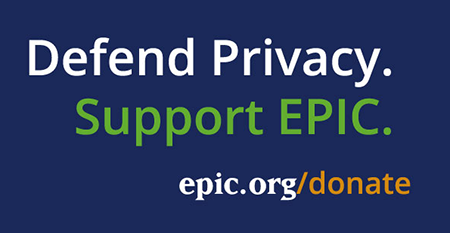State Revenge Porn Policy
Introduction
 Currently, federal law does not provide a remedy to victims of nonconsensual pornography (commonly referred to as "revenge porn"). These victims suffer from having their explicit images posted online without their consent. In the absence of criminal or civil liability for nonconsensual pornography, 34 states and the District of Columbia have passed laws criminalizing or creating civil liability for someone who distributes a sexually explicit image of someone else without the depicted person's consent when the depicted person gave that person the image with the expectation that it would remain private. Nonconsensual pornography is a form of invasive harassment and intimate partner abuse that is not only deeply humiliating for many victims, but can lead to severe financial repercussions through job loss and social stigma.
Currently, federal law does not provide a remedy to victims of nonconsensual pornography (commonly referred to as "revenge porn"). These victims suffer from having their explicit images posted online without their consent. In the absence of criminal or civil liability for nonconsensual pornography, 34 states and the District of Columbia have passed laws criminalizing or creating civil liability for someone who distributes a sexually explicit image of someone else without the depicted person's consent when the depicted person gave that person the image with the expectation that it would remain private. Nonconsensual pornography is a form of invasive harassment and intimate partner abuse that is not only deeply humiliating for many victims, but can lead to severe financial repercussions through job loss and social stigma.
In November 2017, the ENOUGH Act (S.2162) was introduced in the Senate to criminalize revenge porn. Although the current laws give some protection, victims of nonconsensual pornography cannot limit further damage to their career and educational opportunities, reputation, relationships, and mental health without the ability to remove their images from the platforms and websites that host and index them.
Structure of State Revenge Porn Laws
Many of the current state revenge porn laws share a common structure and common terms. They prohibit disseminating sexually explicit images or video recordings of an identifiable person without consent, defining the scope of images that are covered by the statute. These laws clarify that neither voluntarily giving a particular person sexually explicit images or video recordings nor consenting to having an image or video recording taken constitute consent to subsequent dissemination. The laws list exceptions and avenues of relief available to victims.
Exemplary Provisions
No law is perfect, but there are several provisions included in current laws that provide strong protections for victims of nonconsensual pornography. For example:
- Many states have included clear definitions of what types of images are covered and what conduct is prohibited. For example:
- Illinois criminalizes the intentional dissemination of an image of another person "who is identifiable from the image itself or information displayed in connection with the image," who is engaged in a sexual act or whose intimate parts are exposed, when the image was obtained "under circumstances in which a reasonable person would know or understand that the image was to remain private" and "knows or should have known that the person in the image has not consented to the dissemination." 720 ILCS 5/11-23.5(b).
- Some states explicitly recognize that the sharing of intimate images is not a license to distribute them widely or post them publicly. For example:
- Arkansas clarifies that "The fact that an image, picture, video, or voice or audio recording was created with the knowledge or consent of the [depicted] person or that image, picture, video, or voice or audio recording is the property" of the person who disseminates it "is not a defense to prosecution." A.C.A. S 5-26-314. Provisions like this avoid victim blaming and avoid denying remedies to victims of partner abuse.
- Nearly all the state revenge porn laws criminalize nonconsensual pornography, but only some of the states provide for injunctive relief. For example:
- Colorado gives victims a private right of action against the person who posted private images of the victim, including both the right to injunctive relief and monetary damages of either ten thousand dollars or actual damages and attorney fees. Depicted persons also retain a protectable right of authorship regarding the commercial use of their private images. C.R.S.A. S18-7-107.
- While nearly all the states have specifically exempted web platforms from liability, there are states that have not. For example:
- Georgia specifies that prosecutors can rebut the presumption that service providers did not know the content of posts submitted by other parties in order to hold service providers liable. Ga. Code Ann. S 16-11-90(f).
- Vermont holds websites and platforms criminally liable for soliciting or accepting payment from victims for removing or refraining from nonconsensual pornography. 13 V.S.A. S 2606.
Problematic Provisions
The purpose of state revenge porn laws should be to protect victims from harassment and abuse as well as the ongoing harms that result from distribution of nonconsensual pornography. But some of the state laws include provisions do not help victims and, in some cases, could make things worse. For example:
- Overly restrictive provisions:
- Arkansas' nonconsensual pornography statute only applies to the victim's family or household members or former or current romantic partners.
- South Dakota's nonconsensual pornography statute only applies to photographs or recordings which were taken without consent. S 22-21-4.
- Vague provisions
- Kansas' statute criminalizes disseminating sexual images when the depicted person had a "reasonable expectation of privacy," but this term is not defined. K.S.A. S 21-6101(a)(8).
- Georgia's criminal statute does not give victims a private right of action.
What's Missing from These Laws?
States have taken important steps toward protecting victims of nonconsensual pornography, but there are still problems with the current laws. One critical missing element is a remedy for those victims whose images have been posted and made accessible or searchable on web and social media platforms. Without access to broader remedies, victims do not have the tools that they need to prevent the ongoing and future harm caused by disclosure of their intimate images.
Criminal liability for the perpetrator, while important, is not enough. While criminal liability may have a deterrent effect, victims face ongoing harm from the distribution and access to their images without consent. This harm can be more effectively remedied by removing the nonconsensual pornographic material. Absent a removal remedy have unquantifiable but profound long term social and mental health consequences, which monetary damages alone do not address. Both federal and state laws need to be updated to provide more robust remedies:
- Victims should have a private right of action against anyone who posts intimate images of them without their consent;
- Victims should be able to get an injunction against any website that posts or links to their image in order to ensure that the nonconsensual pornography is removed. There are already similar systems for notification and removal in place for copyrighted material under the DMCA.
50 State Survey
Additional Resources
- Danielle Keats Citron & Benjamin Wittes, The Internet Will Not Break: Denying Bad Samaritans Section 230 Immunity (July 24, 2017), Fordham Law Review, Forthcoming; U Maryland Legal Studies Research Paper No. 2017-22.
- Carrie Goldberg Law Firm, State Revenge Porn Laws, (last updated June 8, 2017)
- Cyber Civil Rights Initiative, Revenge Porn Laws
- Jillian Roffer, Nonconsensual Pornography: An Old Crime Updates Its Software
- Time, It's Like Having an Incurable Disease': Inside the Fight Against Revenge Porn, (June 13, 2017)
- Instructions for having revenge porn removed from Google's search results (but not the host website).
- National Conference of State Legislatures, Fighting Revenge Porn
- FTC: What to do If You’re the Target of Revenge Porn
- Carolyn A. Uhl, et al., An Examination of Nonconsensual Pornography Websites (2018)
Share this page:
Subscribe to the EPIC Alert
The EPIC Alert is a biweekly newsletter highlighting emerging privacy issues.







